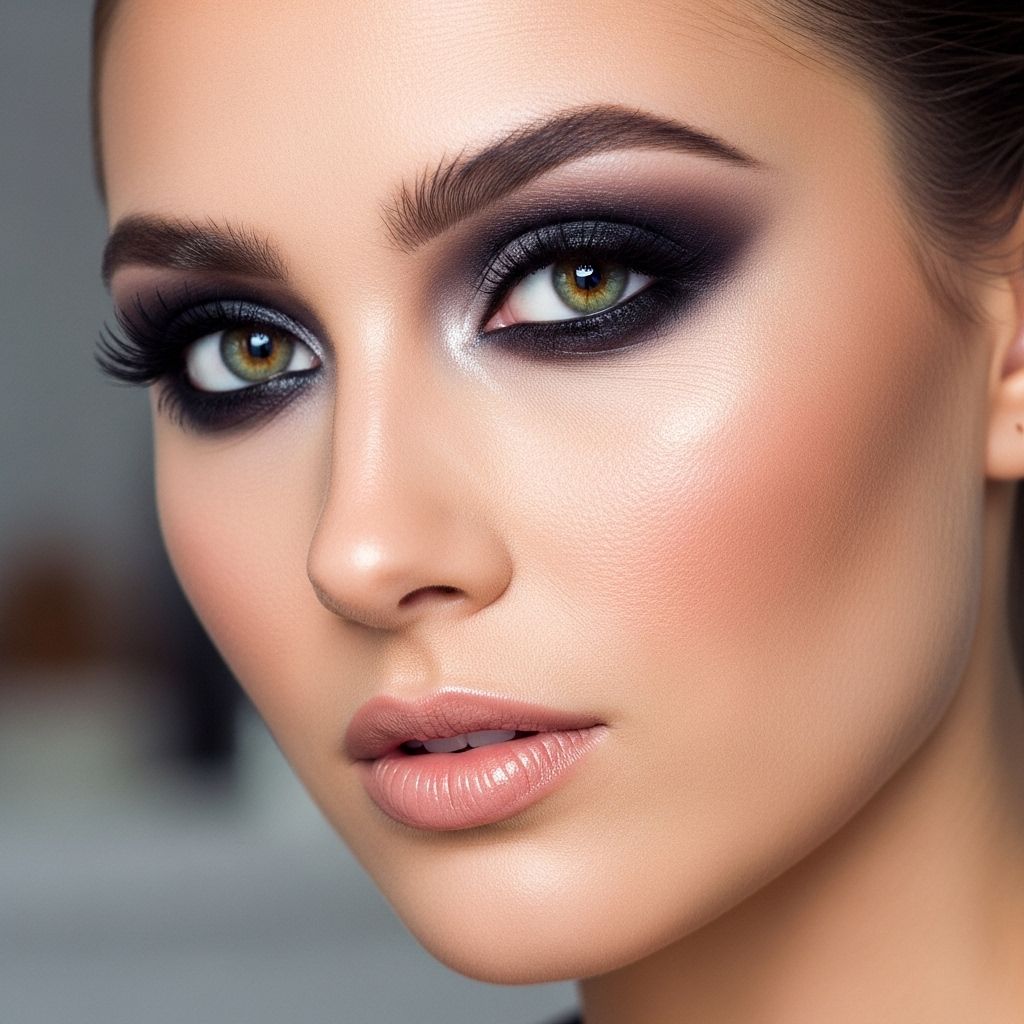Mastering the Smoky Eye: A Comprehensive Guide
Learn the art of creating a stunning smoky eye with ease for any occasion.

Introduction to Smoky Eyes
The smoky eye has been a staple in makeup trends for years, offering a versatile look that can be adapted from casual to glamorous. It’s a technique that requires some practice but is relatively easy to master with the right tools and guidance.
Basic Steps for a Smoky Eye
To create a classic smoky eye, follow these basic steps:
- Base Application: Start by applying a neutral-colored eyeshadow all over your eyelid to create a base. This helps the other colors blend more smoothly.
- Darkening the Corners: Use a dark eyeshadow, such as a matte black or gray, on the outer corners of your eyes. Pack the color at the lash line and blend it upward and outward with a fluffy brush to avoid harsh lines.
- Eye Liner Technique: Sketch a dark pencil eyeliner along your top and bottom lash lines. Don’t worry too much about perfection at this stage. Blend the top edge of the liner with a pencil brush to give it a smoked-out effect.
- Blending for a Smoky Effect: Use a small brush to blend more dark eyeshadow across the eyeliner, creating a seamless haze and softening any harsh edges.
- Finishing Touches: If desired, apply a light shimmery eyeshadow to the inner corners for a brighter look or press glitter eyeshadow into the center of your eyelids for a glamorous finish. Complete the look with mascara and consider adding false lashes for extra drama.
Customizing Your Smoky Eye
The beauty of the smoky eye lies in its versatility:
**Everyday Smoky Eye**
For a more subdued daytime look, use lighter shades and skip the heavy eyeliner. Opt for matte brown shades and a liquid liner to define the lash line without being too intense.
**Neutral Smoky Eye**
A classic smoky eye involves using blacks, grays, or a mix of neutral browns. You can add more dimension with multiple shades in the same family. For a dramatic effect, apply a black eyeshadow to the outer corners or use a taupe shade to transition between colors.
**Colorful Smoky Eye**
Don’t be limited to traditional gray shades. Bright, fun colors can create a vibrant smoky eye. Start with a matte base color like yellow, then apply darker shades of gold and orange to the outer corners. Blend well to merge the colors seamlessly. Use white eyeliner as a base to make the colors more vibrant.
Advanced Techniques for a Smoky Eye
Once you’ve mastered the basics, you can experiment with more advanced techniques:
- Layering Shadows: Build layers of eyeshadow by applying light shades first and gradually increasing the intensity near the outer corners.
- Highlighting: Apply a light shimmery eyeshadow on the brow bone to create a subtle highlight that enhances the overall look.
- Blending: Use different brushes to blend shadows and liners for a seamless transition between colors.
Frequently Asked Questions
Q: What is the best way to prevent raccoon eyes when creating a smoky eye?
A: To avoid raccoon eyes, ensure you blend your eyeshadow and eyeliner well. Use a primer to help eyeshadow stay in place and prevent creasing.
Q: Can I create a smoky eye with just one eyeshadow palette?
A: Yes, you can create a smoky eye using a single eyeshadow palette by selecting shades that range from light to dark. Focus on blending to achieve a seamless look.
Q: How can I make my smoky eye look more dramatic?
A: For a more dramatic smoky eye, use darker shades, apply more intense eyeliner, and consider adding false lashes for extra volume and drama.
Conclusion
Mastering the smoky eye is all about practice and patience. With these techniques, you can create stunning looks perfect for any occasion. Whether you’re aiming for a casual daytime look or a glamorous evening appearance, the smoky eye is a timeless choice that never goes out of style.
References
- https://www.cosmopolitan.com/style-beauty/beauty/how-to/g3016/smoky-eye-how-to/
- https://www.youtube.com/watch?v=ojKYtA9MxE8
- https://www.youtube.com/watch?v=MZiUPwvam7Y
- https://www.cosmopolitan.com/style-beauty/videos/a56278/cosmo-quickie-smoky-eyes-as-easy-as-1-2-3/
- https://www.youtube.com/watch?v=JQ55KwT1XOY
- https://www.cosmopolitanme.com/beauty/25741-kylies-new-and-quick-makeup-tutorial
- https://www.youtube.com/playlist?list=PLAS1zgwGf4u05BdmKylt4nY5F1DO1v8Js
Read full bio of medha deb












